Scania develops sustainable mobility solutions to complement its modern commercial vehicles. As part of a pilot project, employees at the campus in Södertälje are testing the mobility service Scania Go in real-life operation.
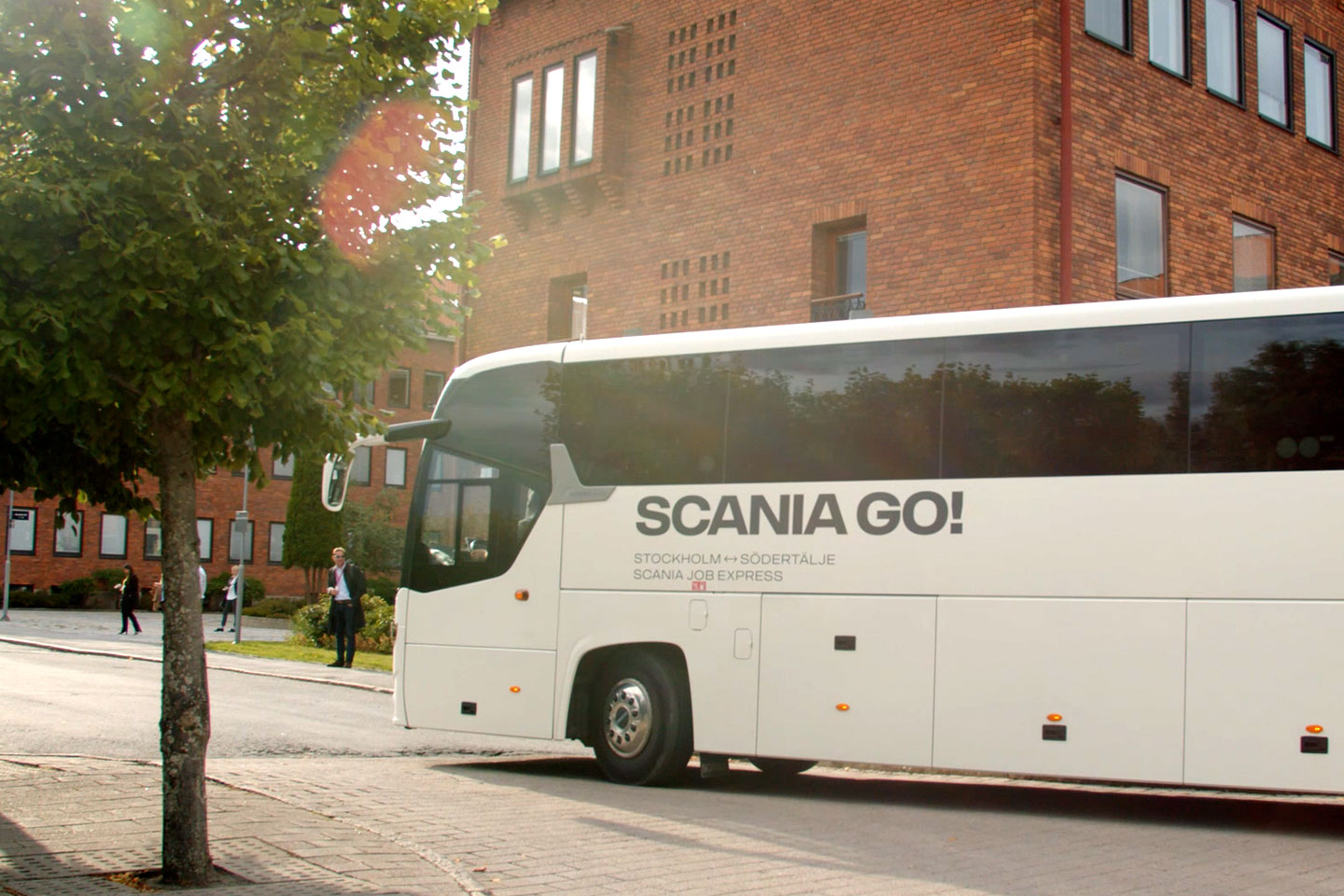
Marcel Kroeze is in a hurry. His meeting starts in 10 minutes, and the meeting room is two kilometers away at the other end of the Scania campus. “It’s basically impossible to find a parking spot there,” says the Dutchman, who has been with Scania in Södertälje for a year and a half. He opens an app on his smartphone and checks on a map, where the position of the shuttle bus is shown in real time. Kroeze leaves his office and arrives at the bus stop just in time—the shuttle bus is just pulling up.
The team from the Sustainable City Solutions business area develops new business models and revenue streams for Scania, which include mobility solutions for the future. But what are the challenges facing cities today and in a few years’ time? And how can we tackle these challenges? The United Nations predicts that up to 2050, cities with more than 10 million inhabitants will grow by 1% per year on average. Although Stockholm’s population is only at around 1 million, over the past years, the area has seen annual growth of around double that amount—and this figure is expected to rise. The impact on mobility is already felt in that every commuter in Stockholm spends the equivalent of 17 working days a year on average stuck in traffic, with around 30% of the time driving in town spent looking for a parking spot. “Just imagine what that will be like with an increase in population of 40% or more. It will hardly be worthwhile driving your own car in the city anymore,” forewarns Kroeze.
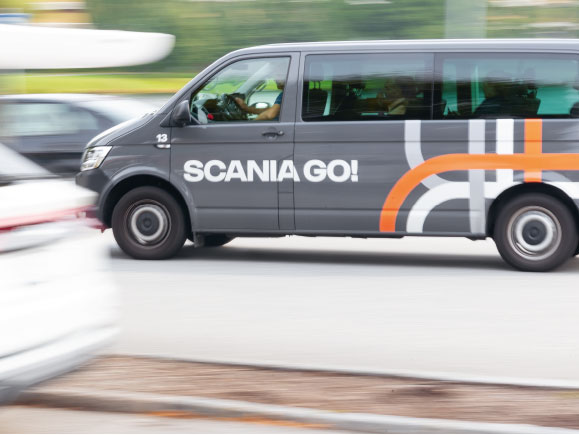
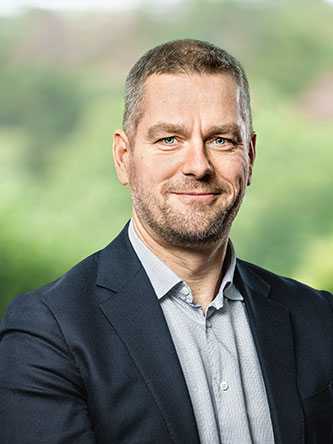
Marcel Kroeze has to get around the Scania campus a lot—and of course uses Scania Go to do that.
“Through the pilot project Scania Go, we are learning what a complete solution for urban mobility could look like.”Marcel Kroeze
Sustainable City Solutions business area, Scania
Catering to all conceivable mobility needs
So what is the solution? Shared smart mobility systems that take the stress off city residents and commuters, reduce CO2 emissions, and bring about sustainable development of transportation that meets demand. “Through the pilot project Scania Go, we are learning what a complete solution for urban mobility could look like and what is needed to make such a solution work,” says Kroeze. But to develop a scalable system, in the end we have to meet the total mobility needs of potential users, including in the evening and on weekends.
Intermodal mobility means making a combination of different transportation options accessible. The key to everything: the smartphone.
In May 2018, Scania Go was launched as a mobility service for the 16,000 employees at the Scania head office in Södertälje, Sweden. With dozens of buildings, the plant site covering several square kilometers is a small town in its own right—with big challenges. The 8,000 parking spots are almost always taken, and the entrances and exits are congested mornings and evenings. Previously, in a lot of cases, when employees had meetings at the other end of the site, they would use their personal vehicles but, unable to find parking, run the risk of arriving late. Now they use the app to check how long until the shuttle bus arrives at their stop. Waiting times are a thing of the past, and people are on time. Productivity also increases: during the first year of use, employees have effectively saved an estimated 60 weeks of working time, which would have otherwise been spent waiting at bus stops or looking for parking.
Scania Go meets various needs with four different transportation options. Departing every 20 minutes in the morning from the Stockholm city center, six coaches bring commuters to Södertälje. “The solution is very popular—the buses are full,” says Marcel Kroeze, adding: “The bus takes you directly to the plant and you don’t have to spend ages looking for a parking spot.” The coach service was already available before the project began, but since the launch of the integrated solution and app, service take-up has increased by almost 20%.
60e-bikes all employees can use on the plant site free of charge.
The basis for integrated urban mobility services
In addition, 14 minibuses run a shuttle service on set routes throughout the plant site. “Last year, 30,000 passengers used the minibus service,” reports team leader Kroeze. With a higher utilization of the service, operating costs per passenger have sunk by 20%. At a later stage, autonomous shuttle buses might also be tested in the system. An on-demand offering is also plausible for these sorts of solutions: a user could then use the app to request the vehicle when needed.
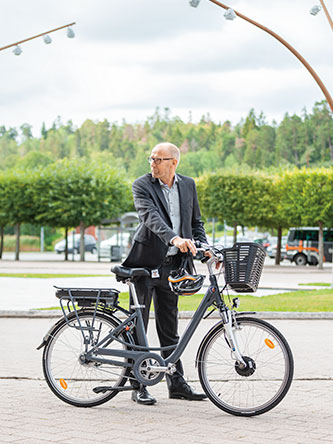
Passionate e-bike user: Hans-Åke Danielsson from the Communications department.
When time is of the essence, pre-authorized employees can also use one of the three plant-owned taxis. In addition, all employees can use the 60 e-bikes on the plant site free of charge. During the first year, the Scania Go team recorded more than 8,200 trips covering around 16,000 kilometers on the e-bikes. The mobility options are popular: the app has been downloaded more than 10,000 times, and 4,000 employees use the services on a regular basis.
It is undoubtedly a success story that in the future might be applied to other areas. “Take business parks. Individual companies will have a difficult time setting up a solution, but for a group of businesses, setting up a mobility system can be worthwhile, and could represent an alternative to expensive parking spots. The solution could even be the basis for integrated mobility services in cities,” says Marcel Kroeze. But the important part now is that we learn how these solutions can be successful in an agile way. The end solution will most likely look different.
Marcel Kroeze’s minibus arrives at the building at the other end of the campus where, of course, all of the parking spots are taken. Thanks to the shuttle service, the team leader still makes it to his meeting on time.
Scania Sustainable City Solutions
Around three years ago, Scania set up the Sustainable City Solutions business area, where it develops solutions to sustainably improve the quality of life in cities. These include mobility systems such as Scania Go and other business models for urban freight transportation and, for example, waste disposal. Sixty percent of logistics costs are attributed to the last mile of delivery, and by 2050, transportation demand is set to triple. This leads to noise and air pollution in cities, which must be avoided. This is achievable through the use of modern trucks and buses with hybrid drive systems that are particularly quiet when driven, or electric vehicles with zero local emissions. Sustainable City Solutions also explores the production of biofuels. In the Waste2Fuel project, the Sustainable City Solutions team is working to produce biofuels from wastewater, a process that saves money and protects the environment. The use of biogas can reduce CO2 emissions by up to 90%. The mission of Scania Sustainable City Solutions is clear: identify problems, design viable solutions, and develop scalable business models that go beyond Scania’s current core.
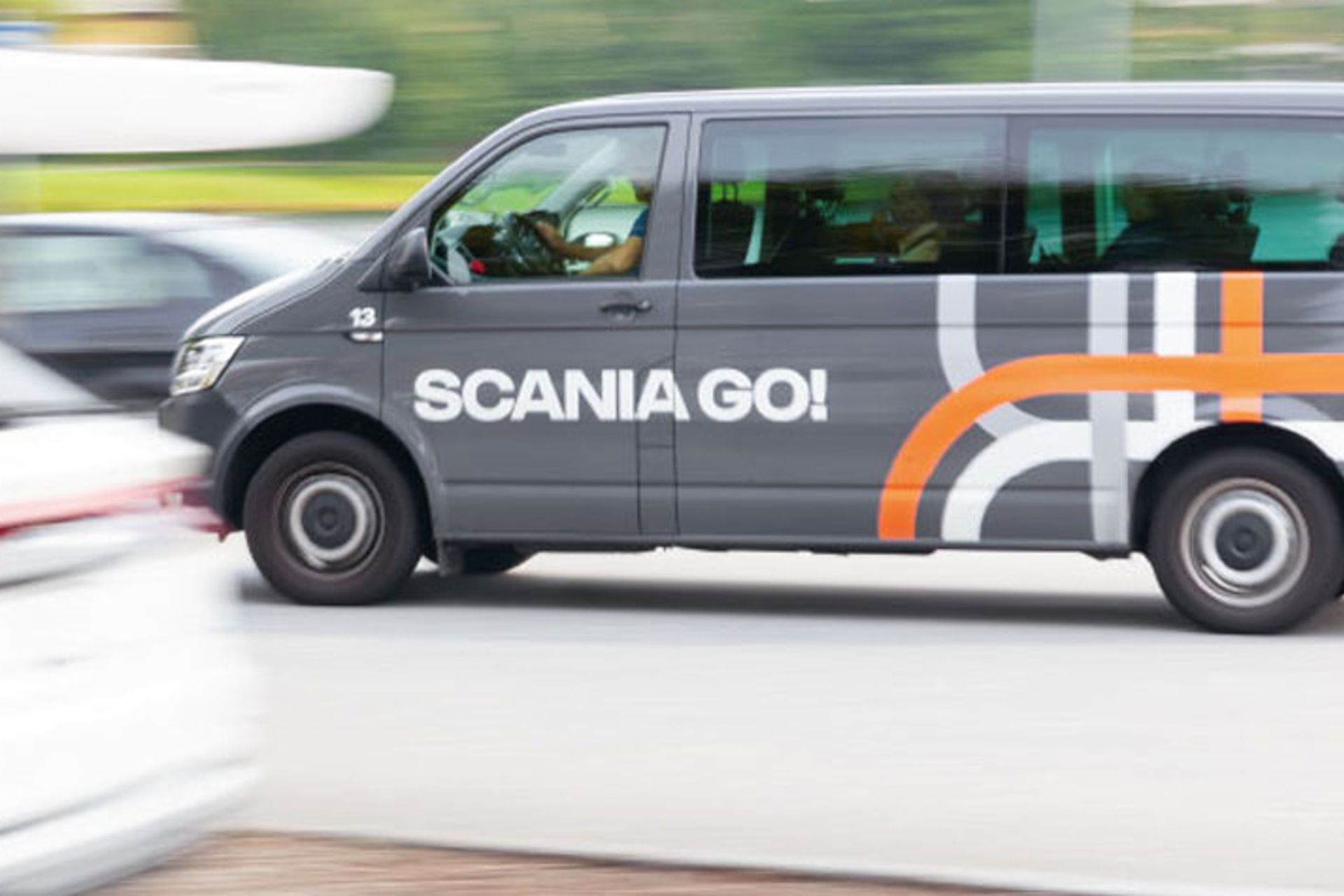

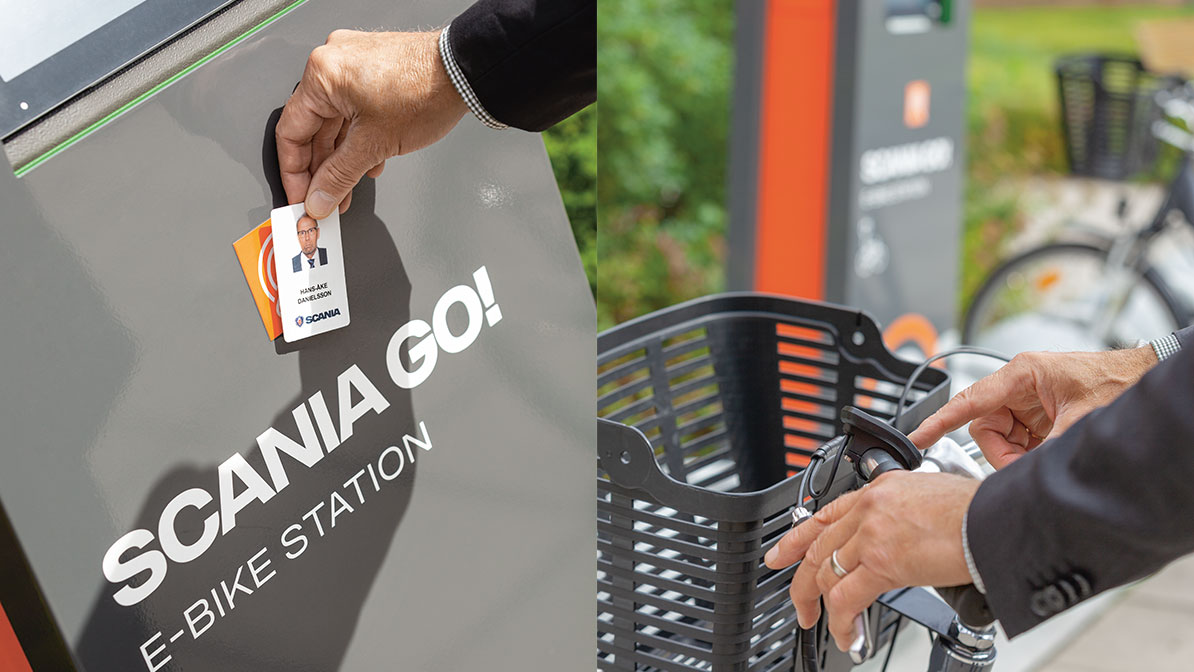
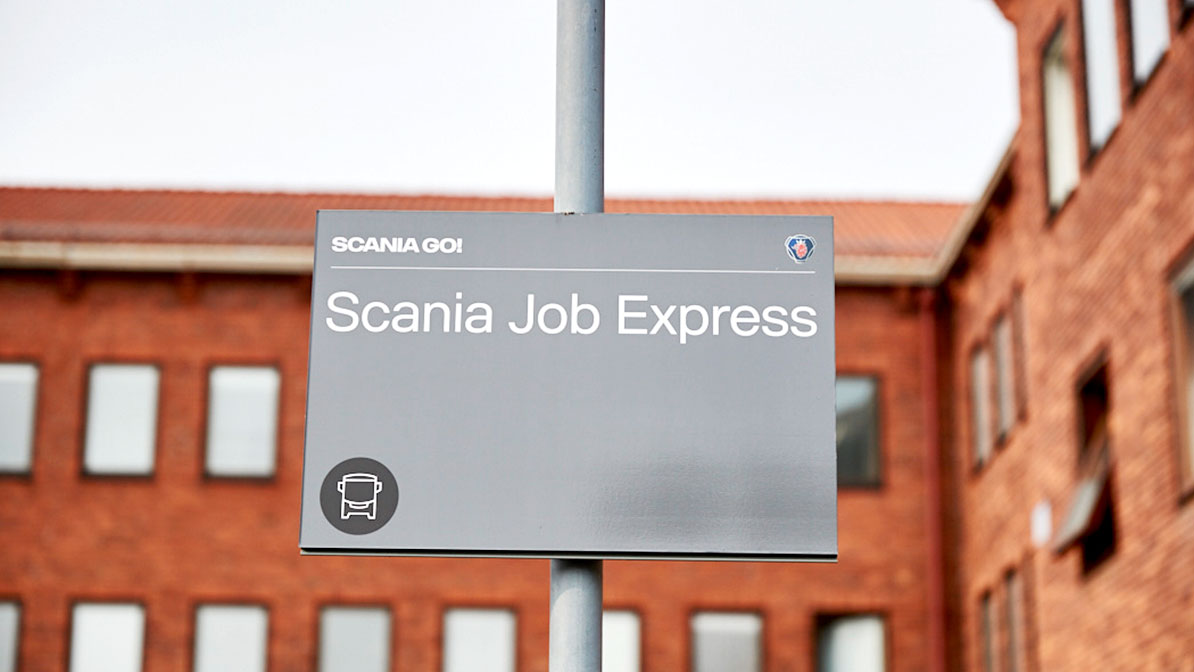
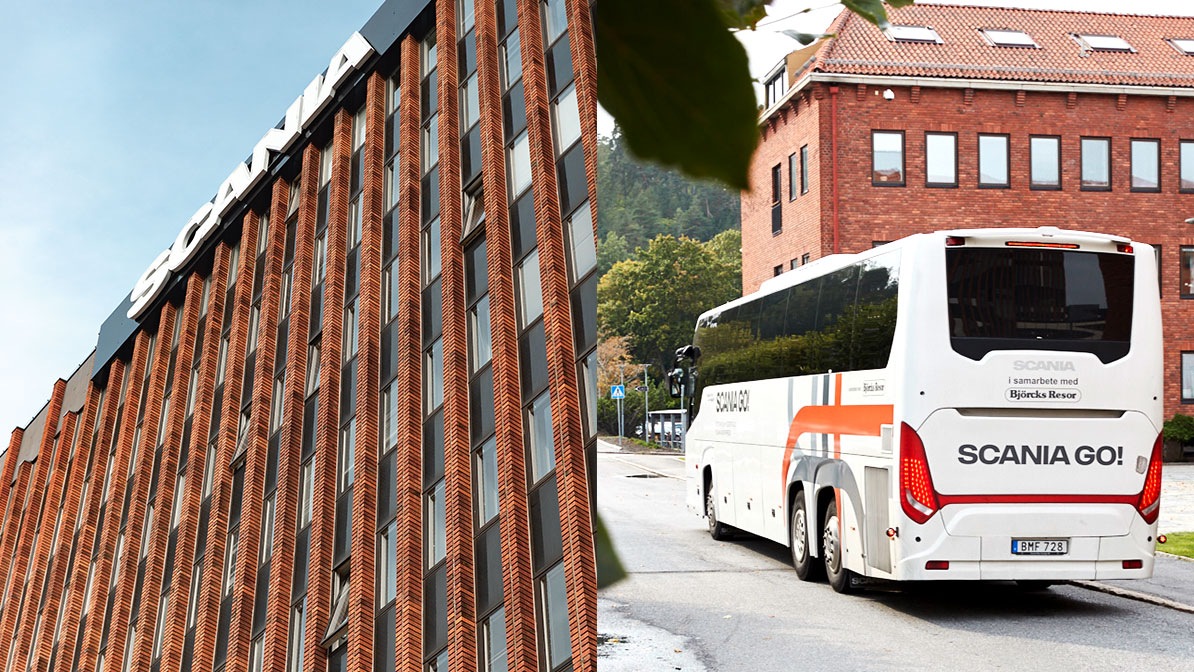



.jpg/jcr:content/Teaser-Grafik-Tiva-Sharifi-3840x2560-V1-(1).jpg
)
.jpg/jcr:content/Teaser-Grafik-Mansoureh-3840x2560-V1-(1).jpg
)



